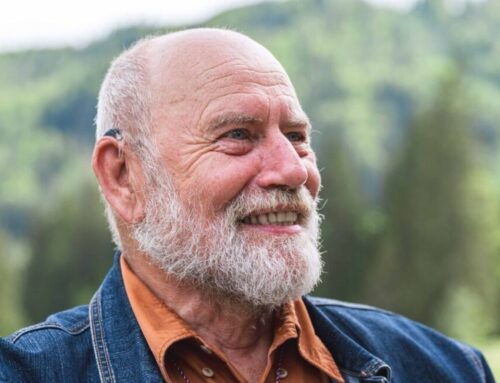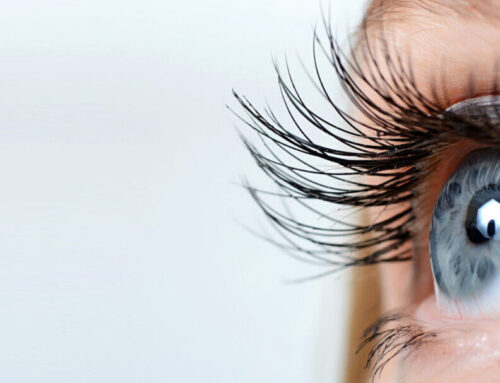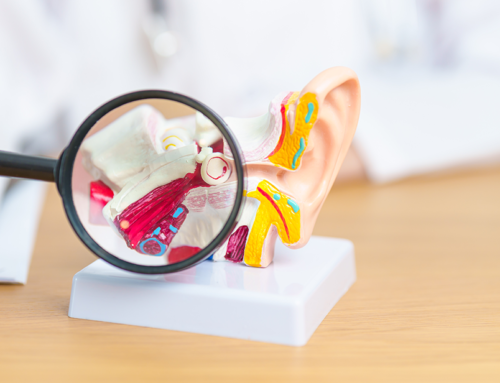The future of cochlear implantation with the surgical team at the Universitätsklinik Wien
In 1993, 30 years ago, the then new CI team at the Universitätsklinik Wien was formed with Prof. Dr. Wolfgang Gstöttner, today Head of the Clinical Department of ENT Diseases there, and our CIA President Prof. Dr. Wolf-Dieter Baumgartner. Today, the team consists of six other surgeons: three CI surgeons of the latest generation talk about their motivation and their research focus.
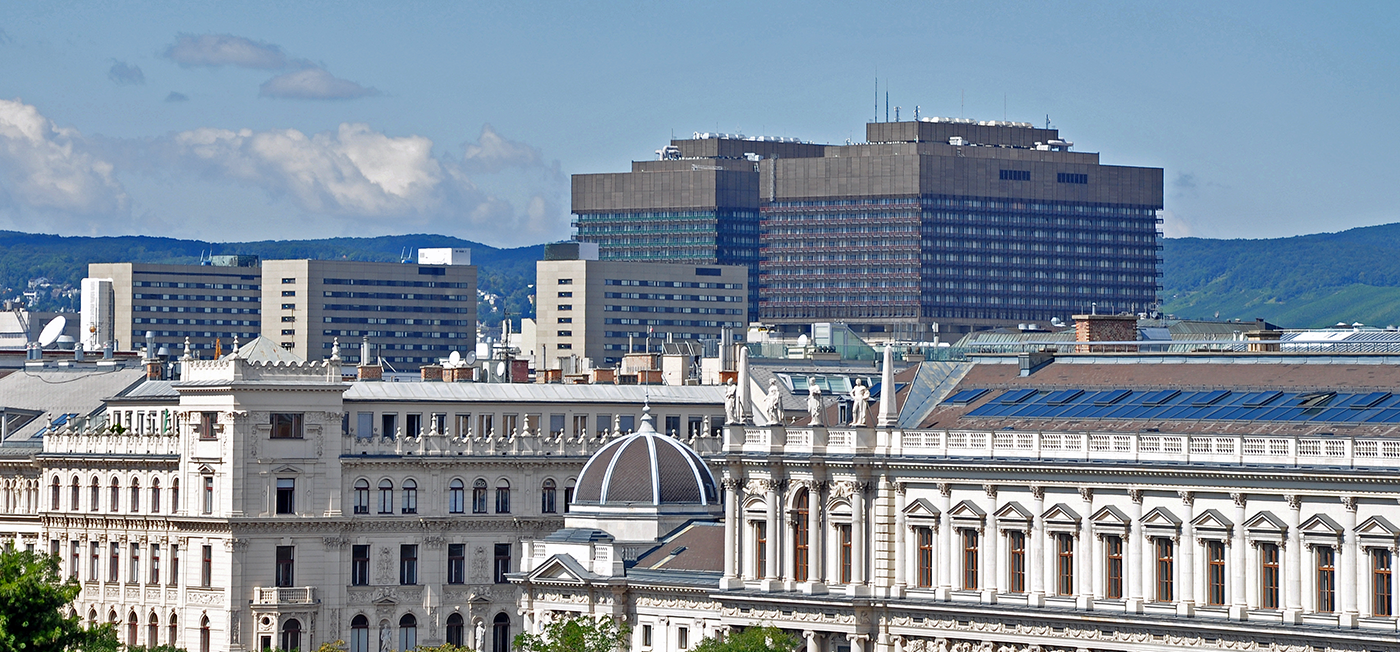
"It is certainly a very nice experience for a doctor when they cure a malignant disease in a patient," says Prof. Priv.Doz. DDr. Thomas Parzefall, CI surgeon at the Universitätsklinik Wien. "But the possibility of replacing a sensory organ with an implant is simply sensational: if we can change a patient's whole life with an operation that takes less than three hours for us! You don't get that feeling in other areas of ENT medicine." This experience is particularly memorable for children, whose parents are often terribly worried after being diagnosed with hearing loss. Working together with the parents and relieving them of some of their worries is: "simply a good feeling."
The 41-year-old doctor, who is also a father, remembers one little patient in particular who was born with a severe multiple metabolic, heart and hearing disorder. "This child's survival was not certain for a long time." When it was finally stabilized after four years, the clinicians were able to consider cochlear implantation together with the long-suffering parents for the first time. The additional mental impairment meant that no speech development was expected. Nevertheless, the parents decided to go ahead with the implant. "Today, they describe how their daughter's character has completely changed: because the implant has enabled her to participate much more in her environment."
Dr. Alice Auinger, the youngest ENT specialist in the CI team at the Universitätsklinik Wien, explains: "In ear surgery in general, we have to work with particular precision. In cochlear implantation, for example, precise microsurgery can preserve residual hearing, which benefits the patient." From a professional point of view, she appreciates this challenge, from a human point of view: "of course the joy that patients give us in return!"
Priv.Doz. DDr. Valerie Dahm was also fascinated by the effect this ENT service can have on children: "I originally wanted to become an ENT doctor because I found cochlear implants for children so fascinating: How great it is for a child to be born deaf and then still be able to hear! At the time, I didn't understand how much the CI could help adult patients." She completed her further specialist training after her diploma thesis at the Rudolfstiftung and the AKH Vienna. There she became part of the CI team and was able to train with Assoc. Prof. Priv.Doz. Dr. Christoph Arnoldner, before the then 33-year-old went to the Sunnybrook Health Sciences Centre in the Canadian city of Toronto as part of a two-year fellowship in 2020.
Outpatient cochlear implantation in Canada
In contrast to the USA, almost everyone in Canada has health insurance, just like in Austria. Nevertheless, access to cochlear implantation is much more difficult than in Austria, explains Dahm: "In Canada, everyone gets what they urgently need. But selected services," such as a hearing implant, "are provided to patients much more slowly than here." This is also due to the highly centralized healthcare system in Canada: In the entire state of Ontario, thirteen times larger than Austria, there are only three CI centers available for over 15 million people - all three near Toronto. In comparison, Austria has a population of nine million and currently has 14 clinics offering hearing implantation.

Childhood with all senses - giving young patients the gift of hearing through CI treatment fills the team of experts at the ENT University Hospital Vienna with happiness and pride. ©Adobe Stock
In addition, some procedures that require inpatient hospitalization in our country are performed on an outpatient basis in Canada. This includes cochlear implantation. "A patient may have to travel eight hours to the clinic on the day of the operation. Four hours after the operation, the patient has to be picked up again and may have to drive eight hours home again." Aftercare also involves such long journeys. In Canada, trials are therefore underway for remote programming via the internet, but the majority of patients also have to go directly to the clinic to have their systems set up. "Usually only the treatment is carried out close to home."
On the other hand, this extreme centralization leads to particularly specialized clinics, in this case specializing in adult ear patients. "That was great for me to learn," says Dahm happily. "I was also able to see a lot of unusual cases." These included a number of patients with vestibular schwannomas. They suffer from progressive hearing loss. If the auditory nerve can be spared during tumor removal, these patients can be fitted with a cochlear implant. Vienna has had good experience with this method. "I then motivated my colleagues in Toronto to try it too." Two patients have already been successfully implanted during the Vienna surgeon's stay: "And I hope the clinic will continue to do so."
"Everyone is finally becoming aware of the importance of newborn hearing screening!"
"Fortunately, children's ears are anatomically no different to adult ears," laughs Dahm. "In Toronto, I only operated on adults for two years. Now I can also treat children again." They are still particularly close to the ENT specialist's heart.
She is therefore looking forward to the new parent-child passport. It should elevate bilateral newborn hearing screening from a recommendation to a mandatory examination. Like many of her colleagues, she would also like to see a follow-up system, especially in the event of abnormal results during the first examination. After all, "New parents are often overwhelmed after the birth." In Canada, for example, parents are reliably reminded of any outstanding examinations. "I experienced this first-hand when my son was born. I was reminded twice over the phone before the examination appointment."
OTOPLAN: deepening anatomy, individualizing hearing implants and enabling HEARO
Dr. Alice Auinger is already familiar with the two- and three-dimensional representations of the ear with OTOPLAN from her training: "They are also helpful for young surgeons to deepen their knowledge of anatomy." OTOPLAN was developed as planning software for the personalization of cochlear implantations according to the individual anatomy of the respective CI candidate. "I was immediately interested in it!" The clinician also used this tool in connection with cochlear implantations.
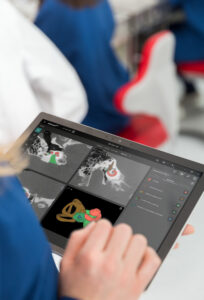
Surgical planning with OTOPLAN is a prerequisite for robot-assisted cochlear implantation with the HEARO surgical robot.
Surgical planning with OTOPLAN is also a prerequisite for robot-assisted cochlear implantation with the HEARO surgical robot. Before the first HEARO operation in Vienna, Auinger's task was to review the data from the routine preliminary examinations of all CI candidates at the time: Who could be offered HEARO surgery? The advantages for patients: "The minimally invasive surgical technique with HEARO protects anatomical structures even better and preserves the skull contour. However, we are dependent on the specialist radiology institutes producing high-resolution CT images in order to be able to determine the required parameters in the planning software." It is now important to sensitize the specialist radiology institutes in this regard: so that HEARO surgery will be possible for more CI candidates in the future.
The world's first female surgeon to operate HEARO surgical robots!
Auinger is also always present during the robot-assisted CI operations herself. She is the radiation protection officer in the team and is therefore responsible for the intraoperative CT measurements. It was the day after International Women's Day 2023 when Prof. Dr. Arnoldner handed over the handling of the robot to her for the first time: "It's psychologically difficult for surgeons to hand over the drilling work to the robot without having an overview themselves." CT, navigation points and control measurements safeguard the procedure, with the surgeon ultimately retaining responsibility.
Auinger's first scientific work dealt with speech comprehension in a babble of voices. This is significantly better for CI users if residual hearing can be preserved during implantation. The clinician also sees future potential for HEARO: "if one day residual hearing can be preserved even better with HEARO than it is now with manual cochlear implantation." One day, she hopes that HEARO surgery will be so quick, simple and safe: "that clinics with little CI experience will be able to implant successfully with HEARO."
First experiences at a school for the hearing impaired in Sri Lanka
Prof. Priv.Doz. DDr. Thomas Parzefall has also worked at the University Hospital of Vienna since the beginning of his ENT medical training. However, he had his first contact with cochlear implants after completing his A-levels in Bavaria: he spent 15 months as a community service worker at a school for the deaf in Sri Lanka.
At that time, only 20 to 30 percent of hearing-impaired people in Sri Lanka had the opportunity to attend school. In rural areas in particular, hearing-impaired children were still often classified as mentally impaired, until it was often only years later that someone happened to point out their hearing impairment and the support available to them. However, the economic situation in the country prevented much support. At least hearing aids for those children with residual hearing were collected and batteries financed during fundraising campaigns abroad, says Parzefall: "so that the hearing aids could be used for the majority of the time at least."
The very committed parents of one child arranged for this child to receive a one-sided cochlear implant in India. Although the child was already four years old at the time of implantation, he developed well with the CI. "We would then have tried to provide other children with CIs. But that was not economically possible."
Nevertheless, these experiences had a helpful impact on many children. "This laid the emotional groundwork for me on the subject of hearing. It never let go of me again." Parzefall went to Austria to study medicine and has been working at Vienna General Hospital for twelve years.
Genetic testing can help in many cases!
Parzefall has been studying the molecular genetics of hearing disorders since 2007 as part of his diploma thesis. He was able to deepen this knowledge during an 18-month research stay at the University of Tel Aviv in Israel. Today, the ENT specialist heads his own research group for hearing genetics at Vienna University Hospital. This involves scientific findings with very practical benefits, as he says: in up to 70 percent of all children and young people with hearing loss, the hearing impairment is due to genetic defects. Recognizing a genetic cause often protects the family and environment of affected children from unfounded self-accusations that they have caused or not prevented the hearing loss. Knowing the possible risk of hearing loss for later siblings also helps with further family planning and preparation.
Up to 20 percent of affected children also have other, often serious, impairments of the heart, kidneys, cognition or metabolism in addition to hearing impairments. "We can also usually dispel the concern that the hearing impairment could be syndromic in this way." However, information about this can also be essential for the families of children with syndromic hearing impairments in order to plan appropriate check-ups and adapt therapy concepts.
Gene therapy is coming, but: "If I'm affected now, it's time for a cochlear implant!"
In the future, genetic testing could also open up opportunities for gene therapy. In the case of the most common genetic cause of hearing impairment in Austria, a connexin 26 defect, hearing is already damaged during pregnancy. It is not yet possible to say whether a later therapy would still be effective.
However, the majority of all genetic hearing impairments are due to various other genetic defects. There are two constellations in which it is hoped that gene therapy will be effective in the medium term:
- if the hearing impairment occurs between birth and the maturation of the auditory pathway.
- if it is a later onset, progressive disease.
In the latter case, the hearing loss begins in later childhood or adolescence and progresses into adulthood, sometimes to the point of deafness. In this case, 20 to 30 years would be enough time to prevent this progression using gene therapy.
In addition to the right time for treatment, the application of the medication is also a challenge that is still being worked on. "If I'm already affected by profound hearing loss, it's time to get a cochlear implant now. A future gene therapy would then definitely come too late," the scientist urgently advises against waiting. "And there will also be many patients in the future who will be better off with a cochlear implant than with gene therapy."
"Ear surgery still has a lot of potential!"
"The cochlear implant and ear surgery have transformed ENT medicine from a marginal medical field to a specialty that can replace a sensory organ," says Parzefall enthusiastically. "There is still a lot of potential: in genetic approaches as well as in further developments in CI, for example with light signals."
"I'm looking forward to the upcoming developments, which I hope to witness. But I would also like to pass on to future colleagues what I have learned and experienced in terms of good collaboration here at the University Hospital."
Medical City Vienna – Not Only for Tourists
Two significant medical schools, a psychoanalytical school, organ transplants and hearing implants were developed in Vienna, which have had a lasting impact on international medicine. A tour to medical sights in the inner districts of Vienna with guide MMag Christina Hieke-Kindlinger.

